 Are you looking for answers on where should your arm hurt after pitching? This is the guide for you!
Are you looking for answers on where should your arm hurt after pitching? This is the guide for you!
Arm soreness after pitching is a common complaint among prospective baseball players and fans. The strenuous nature of the activity places tremendous strain on the arm, causing discomfort. To protect the long-term health of the arm, it is critical to distinguish between typical pain and potential injuries. Individuals should become more aware of warning indicators and take proactive efforts to prevent further damage by learning where the arm should pain after throwing. We will look into the numerous locations of the arm that may suffer pain, distinguish between soreness and injury, and provide helpful insights on how pitchers may maintain ideal arm health in this comprehensive guide.
Pitchers frequently experience arm pain, but it is critical to distinguish between typical soreness and serious problems. Soreness is a natural reaction to the intensive physical activity of pitching and usually appears 24 to 48 hours after a session. It is distinguished by a widespread sensation of discomfort or tightness in several muscle groups, although it should not impair the pitcher's ability to execute everyday tasks. Injuries, on the other hand, can result in chronic and extreme pain, localized swelling, and a loss of function or range of motion. These warning indicators should not be overlooked since they may suggest underlying problems that necessitate medical treatment.
Pitchers can make informed judgments about their arm health if they grasp the difference between aches and injuries. To reduce the chance of injuries, they can take preventative steps such as following adequate warm-up routines, creating structured throwing programs and focusing on solid mechanics. Furthermore, receiving immediate medical attention and sticking to rehabilitation regimens can aid in healing and avoiding future injury. Pitchers can enjoy their favorite sport while avoiding the danger of long-term consequences by emphasizing arm health and being proactive in its management.
Where should your arm hurt after pitching?
Table of Contents
- Where Should Your Arm Hurt After Pitching?
- 1.1 The Anatomy of the Pitcher's Arm
- 1.2 Exploring the Pitcher's Mechanics
- 1.3 Identifying the Common Areas of Arm Pain
- Soreness vs. Injury: Understanding the Difference
- 2.1 What is Normal Soreness?
- 2.2 Recognizing the Warning Signs of Injury
- 2.3 Seeking Medical Attention
- Common Causes of Arm Pain
- 3.1 Overuse and Fatigue
- 3.2 Poor Throwing Mechanics
- 3.3 Insufficient Warm-Up and Stretching
- Preventing Arm Pain and Injuries
- 4.1 Establishing a Proper Conditioning Routine
- 4.2 Following a Structured Throwing Program
- 4.3 Incorporating Cross-Training and Strength Exercises
- Rehabilitation and Recovery
- 5.1 Rest and Active Recovery
- 5.2 Physical Therapy and Rehabilitation Exercises
- 5.3 Gradual Return to Pitching
- FAQs
- 6.1 Can arm pain after pitching be completely avoided?
- 6.2 How can I differentiate between normal soreness and a serious injury?
- 6.3 What are some effective warm-up exercises to prevent arm pain?
- 6.4 Is icing the arm beneficial for recovery?
- 6.5 Can improper mechanics cause arm pain even in the absence of injury?
- 6.6 When should I consult a medical professional about my arm pain?
- Arm Care Program
Where Should Your Arm Hurt After Pitching?
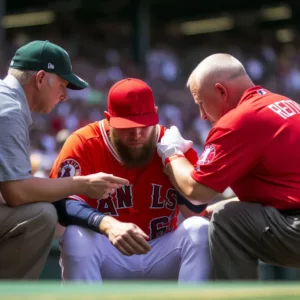 It's critical to recognize the locations of your arm that may feel pain or discomfort after an intense pitching session. While pain tolerance differs from person to person, it is generally agreed that the arm should feel weary and exhausted rather than severe or chronic discomfort. The sections that follow describe the anatomical structures involved in pitching as well as the locations of arm pain that are connected with them.
It's critical to recognize the locations of your arm that may feel pain or discomfort after an intense pitching session. While pain tolerance differs from person to person, it is generally agreed that the arm should feel weary and exhausted rather than severe or chronic discomfort. The sections that follow describe the anatomical structures involved in pitching as well as the locations of arm pain that are connected with them.
The Anatomy of the Pitcher's Arm
To grasp the potential areas of arm pain requires a basic grasp of the pitcher's anatomy. The arm is basically made up of bones, muscles, tendons, and ligaments that all work together during the throwing motion. The following are the important components:
- Humerus: The long bone in the upper arm that connects the shoulder to the elbow is known as the humerus.
- Ulna and Radius: The ulna and radius are two forearm bones that allow rotational movements of the wrist and forearm.
- Rotator Cuff: A set of muscles and tendons that encircle the shoulder joint and provide support while allowing arm mobility.
- Ulnar Collateral Ligament (UCL): A thick band of tissue that links the humerus to the ulna and plays an important part in pitching elbow stability.
Exploring the Pitcher's Mechanics
 Pitching mechanics are the specific actions and techniques that a pitcher employs during a throw. Proper mechanics maximize performance while avoiding arm tension. However, poor mechanics can put too much tension on the arm, resulting in pain and probable injury. Pitchers and coaches alike must understand the biomechanical components of pitching. Consider the following important factors:
Pitching mechanics are the specific actions and techniques that a pitcher employs during a throw. Proper mechanics maximize performance while avoiding arm tension. However, poor mechanics can put too much tension on the arm, resulting in pain and probable injury. Pitchers and coaches alike must understand the biomechanical components of pitching. Consider the following important factors:
- Stride and Balance: Maintaining correct balance and a balanced stride throughout the throwing motion eliminates excessive stress on the arm.
- Arm Positioning: The angle at which the arm is positioned during the cocking, accelerating, and deceleration phases can have an effect on the arm's health.
- Follow-Through: Smooth and controlled follow-through provides for adequate deceleration and eliminates the risk of overstressing the arm.
Where should your arm hurt after pitching?
Identifying the Common Areas of Arm Pain
Soreness in various parts of the arm is frequent following pitching. While soreness is a normal reaction to strenuous physical exercise, it is critical to distinguish between general discomfort and potential damage. Post-pitching discomfort is usually related to the following areas:
- Shoulder: Pitching includes repetitive and strong motions of the shoulder joint, which causes pain in the deltoid and rotator cuff muscles.
- Elbow: During the pitching motion, the elbow joint, particularly the medial side, is susceptible to tension and strain. Soreness in this area could be a sign of a common condition like medial epicondylitis (also known as "pitcher's elbow") or ulnar neuritis.
- Forearm: After pitching, the muscles and tendons in the forearm, notably the flexor and extensor muscles, might become weary and uncomfortable.
- Wrist: While pain or discomfort in the wrist is uncommon, it can arise as a result of excessive tension on this joint during the pitching motion.
It's crucial to note that pain in these locations is often bilateral, affecting both the pitching and non-pitching arms. If the discomfort is limited to one arm or lasts for an extended period of time, it may indicate an underlying injury that necessitates medical treatment.
Soreness vs. Injury: Understanding the Difference
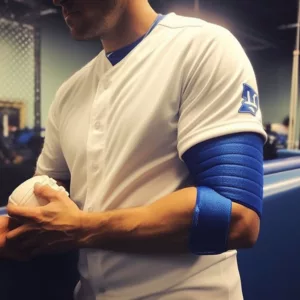 Distinguishing between normal discomfort and an injury is vital to ensure appropriate care and prevent long-term harm. Although both can be uncomfortable, understanding the fundamental differences can allow you to make educated judgments about getting medical assistance. Let's look at the differences between soreness and injury separately.
Distinguishing between normal discomfort and an injury is vital to ensure appropriate care and prevent long-term harm. Although both can be uncomfortable, understanding the fundamental differences can allow you to make educated judgments about getting medical assistance. Let's look at the differences between soreness and injury separately.
What is Normal Soreness?
Normal soreness, often known as "muscle soreness" or "DOMS" (Delayed Onset Muscle Soreness), is a natural result of strenuous physical exertion. It usually appears within 24 to 48 hours of pitching and is distinguished by the following symptoms:
- Generalized Discomfort: Soreness that affects several muscle groups and is not limited to one place is referred to as generalized discomfort.
- Mild to Moderate Pain: Rather than abrupt or severe pain, soreness is generally described as a dull aching or tightness.
- Temporary Duration: Soreness fades over a few days as the muscles recover from the effort.
- No Impairment of Function: Soreness may create transient stiffness or a restricted range of motion, but it has no meaningful impact on a pitcher's ability to complete normal responsibilities.
Normal soreness can be alleviated with adequate rest, hydration, and gentle stretching. It's a good sign that your body is adjusting to the physical demands of pitching.
Recognizing the Warning Signs of Injury
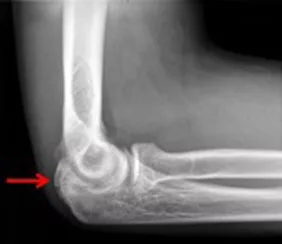 An injury, as opposed to soreness, is a more serious condition that may necessitate medical attention. Here are some red flags that could signal an injury rather than usual post-pitching soreness:
An injury, as opposed to soreness, is a more serious condition that may necessitate medical attention. Here are some red flags that could signal an injury rather than usual post-pitching soreness:
- Persistent and Severe Pain: Injury-related pain is frequently intense, localized, and more severe than general ache. It may worsen as a result of specific motions or activities.
- Swelling and Inflammation: Injuries can create noticeable swelling or inflammation in the affected area.
- Loss of Function or Range of Motion: An injury might make it difficult to perform everyday chores or limit your range of motion in the afflicted joint.
- Popping or Clicking Sensations: Unusual noises or Sensations, such as popping or clicking, during or after pitching, may suggest an underlying problem.
- Abrupt Onset or Sudden Changes: If pain occurs suddenly during a pitch or there is a dramatic drop in performance, this could be an indication of an acute injury.
It is critical not to disregard warning signals of injury. Seeking medical assistance as soon as possible will help to prevent further injury and hasten recovery.
Seeking Medical Attention
If you're unsure if your arm pain is due to typical soreness or a potential injury, see a doctor. They can perform a full evaluation, including a physical examination and imaging tests, and may send you to a specialist if necessary. Early detection and treatment greatly boost the chances of complete recovery.
Where should your arm hurt after pitching?
Common Causes of Arm Pain
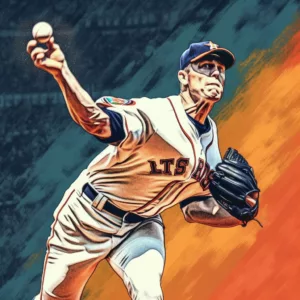 Understanding the most prevalent causes of pitching arm pain is critical for effective prevention and management. Overuse and tiredness, poor throwing mechanics, and improper warm-up and stretching routines are all factors that contribute to arm soreness.
Understanding the most prevalent causes of pitching arm pain is critical for effective prevention and management. Overuse and tiredness, poor throwing mechanics, and improper warm-up and stretching routines are all factors that contribute to arm soreness.
Overuse and Fatigue
Overuse and exhaustion are two major causes of arm soreness in pitchers. Stressing the muscles, tendons, and ligaments of the arm repeatedly without proper rest and recuperation can result in a variety of ailments. Overuse injuries are common.
- Rotator Cuff Tendinitis: Overuse can cause inflammation and irritation of the rotator cuff tendons, resulting in pain and reduced shoulder motion.
- Ulnar Collateral Ligament (UCL) Injury: Excessive strain on the UCL, which is frequently associated with repetitive throwing motions, can cause partial or full tears.
- Little League Elbow: Young pitchers, particularly those involved in Little League or juvenile baseball, are prone to a condition known as medial apophysitis, sometimes known as Little League elbow. Overuse causes the growth plate on the inner side of the elbow to become irritated.
- Flexor Tendinitis: Overuse of the forearm muscles responsible for wrist and finger flexion can result in tendinitis, which causes pain and discomfort on the inner side of the elbow.
To avoid overuse injuries, set pitch count limitations, include rest days in your routine, and gradually raise the intensity and volume of pitching.
Poor Throwing Mechanics
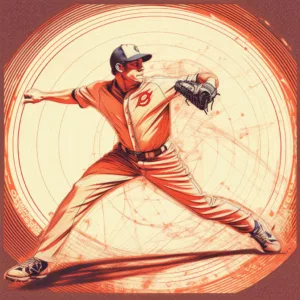 Throwing mechanics that are inefficient or faulty exert extra stress on the arm, increasing the risk of injury. The following are examples of common mechanical flaws:
Throwing mechanics that are inefficient or faulty exert extra stress on the arm, increasing the risk of injury. The following are examples of common mechanical flaws:
- Improper Arm Slot: An improper arm slot during the pitching motion might strain the shoulder and elbow joints.
- Excessive Torque or Twisting: Excessive twisting or over-rotating the body during the throwing motion might put undue strain on the arm.
- Failure to Engage the Lower Body: Failure to engage the lower body adequately can result in higher strain on the arm as the pitcher adjusts to a lack of power.
Working with a trained pitching coach or instructor to improve your mechanics will help you avoid arm injuries.
Insufficient Warm-Up and Stretching
Arm pain after pitching can be exacerbated by skipping or speeding through warm-up exercises and ignoring stretching regimens. Warming up properly boosts blood flow to the muscles, prepares them for vigorous action, and lowers the risk of injury. Stretching exercises also improve flexibility and mobility, allowing for a more efficient pitching motion. Include dynamic warm-up exercises like arm circles and shoulder stretches before moving on to static stretches for the shoulder, forearm, and wrist.
Where should your arm hurt after pitching?
Preventing Arm Pain and Injuries
When it comes to maintaining arm health and avoiding pitching-related injuries, prevention is everything. Pitchers can lower their risk of arm soreness and enhance their performance potential by using the following strategies:
Establishing a Proper Conditioning Routine
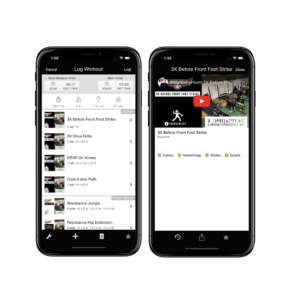 A well-rounded fitness program can boost general strength, endurance, and stability, lowering the risk of arm injuries. Exercises that target the shoulder, forearm, and core muscles should be prioritized. Include exercises that increase stability, such as yoga or Pilates, as well as resistance training, such as band exercises or weightlifting.
A well-rounded fitness program can boost general strength, endurance, and stability, lowering the risk of arm injuries. Exercises that target the shoulder, forearm, and core muscles should be prioritized. Include exercises that increase stability, such as yoga or Pilates, as well as resistance training, such as band exercises or weightlifting.
Following a Structured Throwing Program
A planned throwing program ensures that arm strength and endurance are gradually built up while reducing the danger of overuse problems. It usually includes:
- Gradual Progression: Begin with shorter throw lengths and lower pitch counts, gradually increasing the effort and volume as time goes on.
- Rest Days: Include regular rest days in your schedule to allow for healthy healing and to avoid overuse.
- Pitch Variety: Use a variety of pitches and avoid relying too heavily on high-stress pitches like curveballs or sliders.
Working with a skilled pitching coach or sports trainer can assist you in tailoring a throwing program to your unique needs and goals.
Incorporating Cross-Training and Strength Exercises
Cross-training and strength exercises can improve overall athleticism, balance muscle development, and lower the chance of overuse problems. Consider including workouts like swimming, cycling, or rowing to increase cardiovascular fitness while reducing repetitive stress on the arm. In order to achieve a healthy musculoskeletal system, focus on strengthening workouts that target the shoulder, core, and lower body.
Where should your arm hurt after pitching?
Rehabilitation and Recovery
 Appropriate rehabilitation and recovery methods are required in the event of arm pain or injury for maximum healing. Treatment may include a combination of rest, physical therapy, and a gradual return to pitching, depending on the severity of the disease.
Appropriate rehabilitation and recovery methods are required in the event of arm pain or injury for maximum healing. Treatment may include a combination of rest, physical therapy, and a gradual return to pitching, depending on the severity of the disease.
Rest and Active Recovery
Rest is essential for the body's ability to heal from injuries and reduce inflammation. Focus on active rehabilitation activities such as modest range-of-motion exercises, swimming, or low-impact cardiovascular workouts throughout the rest period to maintain conditioning while reducing stress on the damaged arm.
Physical Therapy and Rehabilitation Exercises
Working with a trained physical therapist can give you tailored exercises and modalities to help you recover and strengthen the damaged areas. Physical therapy may include the following:
- Strengthening Exercises: Specific workouts that target the muscles and tendons involved in the pitching motion, progressively regaining strength and stability.
- Exercises for Stretching and Flexibility: Gentle stretching regimens enhance flexibility and restore range of motion in the legs, trunk, and arms.
- Modalities: To relieve pain and inflammation, therapeutic modalities such as ultrasound, electrical stimulation, or massage may be employed.
Compliance with specified rehabilitation exercises and adherence to the advice of a healthcare practitioner is critical for a good recovery.
Gradual Return to Pitching
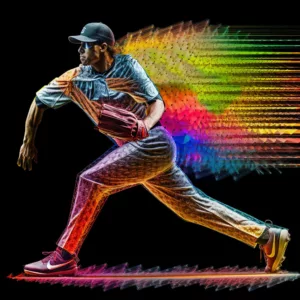 Returning to pitching after an injury should be done gradually and under supervision. To guarantee a safe and progressive comeback, it is critical to follow the advice of a medical specialist or pitching coach. The procedure may include the following steps:
Returning to pitching after an injury should be done gradually and under supervision. To guarantee a safe and progressive comeback, it is critical to follow the advice of a medical specialist or pitching coach. The procedure may include the following steps:
- Throwing Progression: Progression in Throwing: Begin with lesser distances and lower intensity, gradually increasing pitch counts and lengths over time.
- Monitoring and Adjustments: Regular assessments by a medical specialist or coach can guarantee that the return-to-pitching program is tailored to your specific needs and development.
- Paying Attention to Your Body: During the return-to-pitching procedure, keep an eye out for any indicators of discomfort or pain. Communicate with your healthcare team to make any necessary changes or adjustments to avoid setbacks.
Where should your arm hurt after pitching?
Frequently Asked Questions
- Is it possible to entirely eliminate arm aches after pitching? Pitchers may have arm pain or soreness after pitching, especially if they have been training or competing hard. However, arm soreness and injuries can be considerably avoided by following adequate warm-up routines, establishing structured drill-based throwing programs, maintaining overall conditioning, and practicing good mechanics.
- How do I tell the difference between a regular ache and a catastrophic injury? Normal soreness is distinguished by general discomfort, mild to moderate pain, and short duration. It has no discernible effect on function or range of motion. A significant injury, on the other hand, frequently entails prolonged and acute pain, swelling, loss of function, or range of motion, and may necessitate medical treatment. If you are doubtful, it is better to seek the advice of a medical practitioner.
- What are some good warm-up exercises for preventing arm pain? Warm-up activities that are effective include dynamic motions that enhance blood flow and prepare the muscles for activity. Arm circles, total body movements, and drill throwing exercises are frequently advised. Incorporating cardiovascular activities such as sprinting or cycling can also improve warm-up and overall performance.
- Is icing the arm good for recovery? After pitching, icing the arm can assist reduce inflammation and provide short pain relief. Ice can be applied for 15 to 20 minutes at a time, with at least a 45-minute interval between sessions. However, icing should not be used in place of proper rest, rehabilitation, and medical treatment, if necessary.
- Can poor mechanics induce arm pain even when there is no injury? Yes, even in the absence of an injury, incorrect pitching mechanics can cause undue stress on the arm, resulting in pain and discomfort. Inefficient movement patterns, overuse of specific muscles, and increased joint tension can all come from poor mechanics. Correcting mechanics with a pitching program and or instructor can help relieve arm pain and lessen the likelihood of future injuries.
- When should I get medical attention for my arm pain? If you have persistent or worsening pain, swelling, or loss of function, or if your arm pain interferes with your ability to conduct everyday duties, you should see a doctor. To guarantee optimal arm health, they can provide an accurate diagnosis, establish a specific treatment plan, and accompany you through the recovery process.
Where should your arm hurt after pitching? Arm Care Program
Are you prepared to take your arm care to the next level? Join the 3X Pitching Velocity Program or the 2X Position Player Velocity Program today!
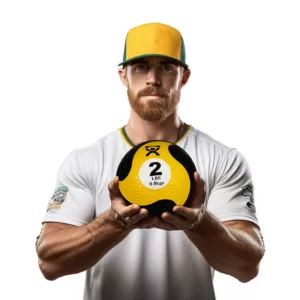 If you're a pitcher or position player trying to improve your arm performance and avoid injuries, it's time to take action and join the game's greatest arm care program. The 3X Pitching Velocity Program and the 2X Velocity Program for position players are specifically intended to improve arm strength, throwing velocity, and general arm health.
If you're a pitcher or position player trying to improve your arm performance and avoid injuries, it's time to take action and join the game's greatest arm care program. The 3X Pitching Velocity Program and the 2X Velocity Program for position players are specifically intended to improve arm strength, throwing velocity, and general arm health.
Enrolling in these comprehensive programs will provide you with access to a plethora of knowledge and resources from industry professionals. You'll discover cutting-edge tactics, tried-and-true training methods, and personalized coaching to help you reach your goals. These programs will help you improve your pitching velocity, throwing accuracy, and arm endurance, among other things.
The 3X Pitching Velocity Program is specifically designed for pitchers, with an emphasis on developing explosive power, speed, and mechanics. You'll reach your maximum potential on the mound by using a methodical strategy and a combination of strength training, plyometrics, and pitching-specific drills.
Meanwhile, the 2X Velocity Program is geared for position players, providing a full arm care program to improve arm strength, accuracy, and throwing efficiency. You'll learn proper mechanics, functional exercises, and focused drills to improve your throwing ability and become a more dominant field player.
Don't put off taking your arm care to the next level any longer. Join the 3X Pitching Velocity Program or the 2X Position Player Velocity Program today to begin your journey to becoming a stronger, more efficient, and injury-resistant athlete. Your arm will thank you, and you'll be one step closer to realizing your full diamond potential.
Select the link below for additional information and to enroll in the 3X Pitching Velocity Program or the 2X Velocity Program for position players. Take charge of your arm health and realize your full throwing ability!




